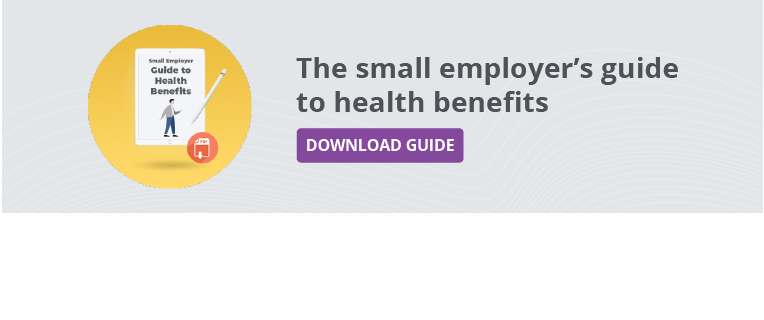5 questions businesses with employees in multiple states should ask about health benefits
Group Health Insurance • March 20, 2017 at 11:45 AM • Written by: PeopleKeep Team
As we’ve discussed before, more and more businesses are expanding their
operations to other states. Virtual workplaces, better connectivity, and remote technology allow today’s companies to recruit top talent regardless of location—a win-win for businesses and employees.
At the same time, employing workers in multiple states isn’t easy. One of the biggest concerns multistate businesses face is how to provide multiple state health insurance; that is, how to provide health benefits to workers scattered across the country.
If this sounds like your business, here are five questions to ask when considering your benefits options.
Question 1: How different are the health insurance landscapes in each state?
Because insurance is regulated at the state level, you’ll need to look at the insurance landscapes in each state you’re considering. This will influence things like consumer choice, cost, and how each state’s insurance department regulates policies.
One way around this is to purchase a national policy that covers all of your employees regardless of where they live. But only a few insurers offer national policies, and group health insurance tends to be more expensive than other options, such as a health reimbursement arrangement (HRA). A national policy may also limit the network of providers your employees can choose from.
Question 2: How Will Costs Differ Between Options?
Generally, costs are comparable between state-specific and national group health insurance, although both options may be too costly for small businesses.
This is where a health reimbursement arrangement like the qualified small employer HRA (QSEHRA), or small business HRA, can help. A QSEHRA usually costs less than group health insurance purchased from a national or state provider. This is because, with a QSEHRA, the business sets an allowance that employees use to reimburse themselves for the cost of purchasing individual health insurance. The QSEHRA will also cover employees in multiple states, giving them the flexibility to buy their own policy and choose local healthcare providers.
Question 3: How Much Will I Be Able to Contribute to My Employees’ Premiums?
Health coverage is one of the most sought-after employee benefits, and businesses that cut health benefits with an eye toward reducing their costs risk losing good employees. Likewise, businesses that offer better benefits and higher contributions have a better chance of hiring and keeping the best people.
According to the Kaiser Family Foundation 2016 Employer Health Benefits Survey, businesses cover an average 82 percent of employees’ health insurance costs through group health insurance. The average coverage through a QSEHRA is 100 percent.
Question 4: How Much Time Do I Have to Administer Health Insurance?
Time is precious for any business. For small business owners juggling a variety of demands, it seems like there’s never enough of it. When deciding which type of health coverage to offer, time is a factor you shouldn’t ignore.
Balancing the rules of multiple state policies is the most complicated and time-consuming option. And while a national policy may be easier to keep track of, limited availability might make it impossible to find a plan that covers everyone in your organization. By contrast, a QSEHRA will cover all workers and takes very little time to administer—especially if you invest in administration software.
Question 5: What Do My Employees Prefer?
At the end of the day, it’s important to consider why you’re providing health insurance in the first place. If health insurance is there to benefit your workers, doesn’t it make sense to consider what they want?
Although employees may be more familiar with group health insurance and thus view it as a simpler option, an HRA offers more choice and usually a greater contribution from the company. An important step in getting employees on board with a new type of plan is to communicate why you’re making a change and provide information designed to help employees take advantage of their health benefits.
Conclusion
No health insurance plan is a one-size-fits-all solution, but some options have more obvious advantages than others. For small businesses, HRAs tend to provide the most favorable mix of affordability, ease of administration, and value to the employee.

